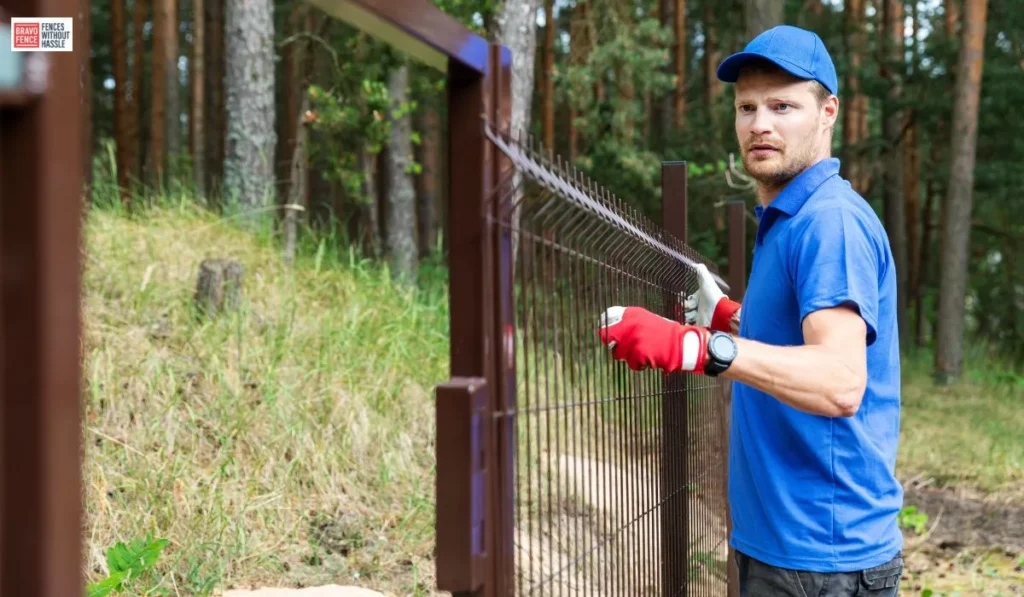Dog owners often seek the best materials for creating secure and comfortable environments for their furry friends.
Fences serve as essential boundaries, providing safety and freedom for dogs to roam within a confined space.
However, choosing the suitable material for a dog fence can be challenging, considering various factors such as durability, safety, maintenance, and suitability for different breeds.
Criteria for the Best Dog Fence Material
Several crucial criteria come into play when evaluating materials for a dog fence.
The material’s durability, strength, safety features, and maintenance requirements significantly impact the fence’s effectiveness in containing and protecting dogs.
Top Materials for Dog Fences
Chain-link Fences
Chain-link fences are renowned for their durability and affordability.
They offer excellent visibility and ventilation, ensuring dogs don’t feel too confined.
However, they might lack aesthetic appeal and pose safety concerns for smaller breeds.
Wooden Fences
Wooden fences provide privacy and a classic look to the property.
They offer better containment and security, especially for larger dogs.

However, they require regular maintenance to prevent rotting or splintering.
Vinyl Fences
Vinyl fences combine the aesthetics of wooden walls with low maintenance requirements.
They are durable and resistant to rot, but they might not withstand solid impacts and could be costly.
Invisible Fences
Invisible fences operate through buried wires and collars.
While they offer an unobstructed view, they require training for the dog and may not deter other animals from entering the perimeter.
Choosing the Right Material for Your Dog
Selecting the suitable material involves considering the dog’s breed, size, and behavior.
Factors like budget constraints and the property’s landscape also play pivotal roles in making the right choice.
Installation and Maintenance Tips
Whether opting for DIY installation or hiring professionals, understanding maintenance needs is crucial.
Each material demands specific care to ensure longevity and effectiveness.
Conclusion
In conclusion, the best material for a dog fence varies based on individual preferences, dog breeds, and property requirements.
It’s essential to weigh the pros and cons of each material against specific needs before deciding.
FAQs

Which material is the most durable for a dog fence?
The most durable material for a dog fence often depends on various factors, such as weather conditions, the size of the dog, and the intended use of the wall. Chain-link bars are known for their durability and can withstand various weather conditions. However, wooden fences can be durable if properly maintained and treated against rot and weathering.
Are invisible fences safe for all dog breeds?
Invisible fences can be safe for many dog breeds when used appropriately and with proper training. However, they might not be suitable for every dog, especially those with certain health conditions, extremely timid dogs, or breeds less responsive to training. It’s crucial to consult with a professional dog trainer or veterinarian to determine if an invisible fence is suitable for your specific dog.
Do vinyl fences require more maintenance compared to wooden fences?
Generally, vinyl fences require less maintenance compared to wooden fences. Vinyl is resistant to rot, pests, and weather damage, requiring occasional cleaning with water and mild soap. In contrast, wooden fences need regular maintenance, including staining or painting, to protect against rot and weathering.
Can chain-link fences be customized for different property sizes?
Yes, chain-link fences are highly customizable and can be adjusted to fit various property sizes. They are available in different heights and can be installed to suit the specific dimensions of your property. Additionally, gates and openings can be customized to provide easy access while maintaining security.
What is the average lifespan of different dog fence materials?
The lifespan of dog fence materials varies depending on the material used and how well it’s maintained. Generally, chain-link fences can last 15-20 years, vinyl fences 20-30 years, and wooden fences 10-15 years with proper maintenance and care. Invisible walls, with appropriate maintenance of the wiring and collars, can last around 10-15 years. Regular maintenance significantly impacts the lifespan of any dog fence material.
Are there any specific considerations for choosing a dog fence material in areas prone to extreme weather?
Durable materials such as vinyl or chain-link fences tend to perform better in regions with harsh weather conditions like heavy rainfall, extreme heat, or snow. These materials are more resistant to weather damage and require less maintenance in such climates.
Can dogs easily escape from invisible fences?
Invisible fences rely on training and a specialized collar that emits a warning sound or mild correction when the dog approaches the boundary. While effective for many dogs, some determined or highly motivated dogs might learn to challenge or ignore the warning, potentially allowing them to escape the border.
Which dog fence material is the most cost-effective in the long run?
The cost-effectiveness of a dog fence material depends on factors such as initial installation expenses, maintenance costs, and durability. While chain-link fences are more affordable upfront, vinyl fences are more cost-effective with their low maintenance requirements and longer lifespan.
Are there any specific safety considerations when using wooden fences for dog containment?
Wooden fences are sturdy but can pose risks if not properly maintained. Regularly inspect for splinters, loose boards, or protruding nails that could harm your dog to ensure safety. Treating the wood with pet-safe sealants or paints can enhance its durability and safety.
Do different dog breeds have specific preferences for certain fence materials?
Dog breeds vary in size, behavior, and physical abilities, influencing their compatibility with different fence materials. For instance, small breeds might need fences with smaller gaps to prevent escape, while larger species might require more muscular, taller walls for containment. Understanding your dog’s traits can help you select the most suitable fence material.






